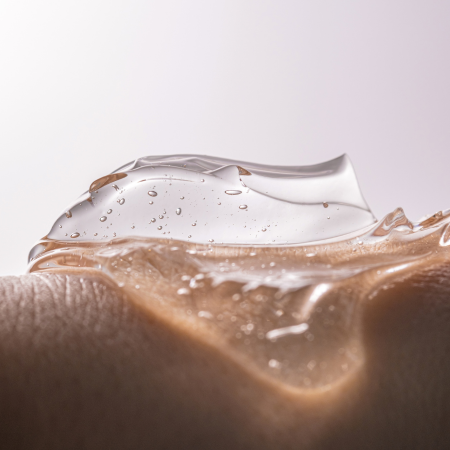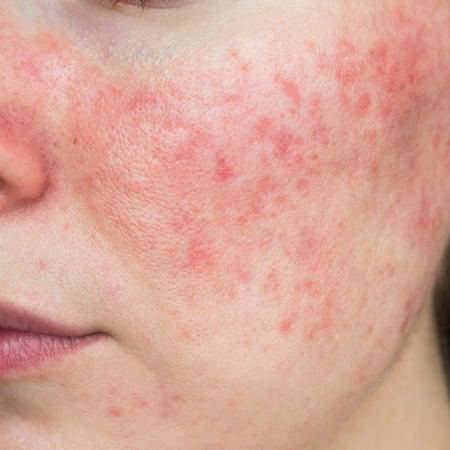Comparing PDO Threads with Traditional Facelift: Pros and Cons
In the quest for a youthful appearance, many individuals are exploring different options for facial rejuvenation. Two popular choices that often come up in this discussion are PDO (polydioxanone) threads and traditional facelift surgery. Both procedures have their unique advantages and drawbacks, making it essential for individuals to understand the key differences between them before making a decision. We'll delve into the pros and cons of PDO threads and traditional facelifts to help you make an informed choice for your cosmetic goals.
Understanding PDO Threads and Traditional Facelifts
Facial rejuvenation has come a long way, offering many options for individuals seeking to reduce the signs of aging. Two popular methods that have gained significant attention are thread lifts and traditional facelifts. To fully understand these procedures and their respective pros and cons, let's explore them in detail.
Thread Lifts
These are thin, biodegradable sutures made of a safe and absorbable material. They are inserted into various regions beneath the skin to lift sagging tissue, creating a more youthful appearance. What sets them apart is their unique design with barbs or cones along the thread's surface, allowing for a secure grip on the underlying tissue.
It is important to note that they may not be suitable for everyone or every case. The effectiveness depends on a variety of factors, including age, skin condition, and desired outcomes. Consulting with an experienced healthcare professional will help determine the most appropriate approach for each individual.
Traditional Facelifts
A traditional facelift, also known as a rhytidectomy, is an invasive surgical procedure aimed at addressing signs of aging in the face and neck region. It involves making incisions along the hairline, lifting and repositioning underlying tissues, removing excess skin, and meticulously closing the incisions.
The primary goal of a traditional facelift is to create a more youthful appearance by tightening sagging skin, reducing wrinkles, and restoring facial contours. Unlike non-surgical facelifts, traditional facelifts require general anesthesia and entail a longer recovery period.
One significant advantage of a traditional facelift is its ability to address extensive facial aging concerns comprehensively. It can effectively lift sagging jowls, reduce deep creases around the mouth and nose (nasolabial folds), and contour the jawline to achieve a more defined profile.
However, it's crucial to recognize that traditional facelifts involve inherent risks associated with any surgical procedure, such as bleeding, infection, scarring, nerve damage, and prolonged recovery time. Moreover, the invasiveness of the surgery and the need for general anesthesia may not be suitable for individuals with certain medical conditions or those seeking more conservative approaches.
Comparative Analysis: PDO Threads or Traditional Facelifts
In recent years, advancements in non-surgical facelifts have provided an alternative option for facial rejuvenation, offering a nonsurgical facelift option with less downtime and reduced risks compared to traditional facelifts.
One of the key advantages over traditional facelifts is their minimally invasive nature. The procedure can be performed under local anesthesia, reducing the risks associated with general anesthesia. Additionally, treatments typically involve shorter recovery periods, allowing individuals to resume their daily activities sooner.
Another significant benefit is that they offer a more targeted approach to facial rejuvenation. Different types of threads can be used to address specific concerns, such as sagging jowls, nasolabial folds, or eyebrow lifting. This customization allows for a more tailored treatment plan based on individual needs and desired results.
While they offer numerous advantages, it's important to note that they are not suitable for individuals with advanced signs of aging or significant skin laxity. Traditional facelifts may still be the preferred option in such cases, as they can provide more extensive and dramatic outcomes.
Pros and Cons of Thread Lifts
Thread lifts have gained popularity as a non-surgical facelift alternative to traditional facelifts for facial rejuvenation.
Pros:
- Minimally invasive: One of the key advantages are that they are minimally invasive compared to traditional facelifts.
- Versatility: They offer versatility in treatment options. There are different types of threads, such as bi-directional, multi-directional barb threads, and smooth threads, allowing for customized treatments based on individual needs and desired outcomes. They can target various areas, including eyebrows, undereyes, cheeks, nose, nasolabial folds, mouth/lips, jawline, neck, and even certain body areas.
- Natural-looking results: As the threads stimulate collagen production in the skin, it can lead to a gradual improvement in skin texture and tightness over time. This can result in a more youthful appearance without the overly tight or pulled look often associated with traditional facelifts.
- Safety profile: MINT™ PDO threads, for example, have triple FDA clearances for skin approximation, nasolabial fold depth reduction, and facial suspension surgery. This ensures that the product has undergone rigorous testing and meets safety standards for use in aesthetic procedures.
Cons:
- Temporary effects: While threads provide immediate changes after the procedure, it's important to note that the effects are not permanent. The longevity of results typically lasts up to a year but varies from person to person due to individual factors such as age, lifestyle habits, and overall skin health.
- Possibility of minor side effects: Like any minimally invasive procedure, there can be some potential side effects. These may include temporary bruising, swelling, or soreness at the treatment site. However, these are usually mild and subside within a few days or weeks.
Pros and Cons of Traditional Facelifts
Traditional facelifts have long been a popular option for individuals seeking more comprehensive facial rejuvenation. Let's explore the pros and cons of traditional facelifts.
Pros:
- Long-lasting results: Traditional facelifts offer more significant and long-lasting results compared to non-surgical facelift alternatives. By surgically lifting and tightening facial tissues, it can address moderate to severe sagging skin, deep wrinkles, and excess fat deposits. The results can last for several years.
- Customizable: Facelifts also allow for a high level of customization. Surgeons can tailor the procedure based on individual needs and desired outcomes to achieve natural-looking results that complement the patient's facial features.
- Proven effectiveness: They have a long history of proven effectiveness in treating signs of aging on the face. Surgeons who specialize in this procedure have extensive training and experience in achieving optimal results for their patients.
Cons:
- Invasive surgery: This procedure does involve invasive surgery under general anesthesia. This means a longer recovery time and potential risks associated with any surgical procedure, such as bleeding, infection, scarring, or adverse reactions to anesthesia.
- Higher cost: facelifts tend to have a higher cost compared to non-surgical procedures. The price reflects factors such as surgeon expertise, operating room fees, anesthesia costs, and post-operative care.
- Extended recovery period: Recovery typically involves a longer downtime. Patients may need several weeks to fully recover and may experience temporary bruising, swelling, tightness, and discomfort during this time.
Deciding Between PDO Threads and Traditional Facelifts
When considering options for facial rejuvenation, it's important to carefully weigh the pros and cons of each procedure. Both approaches have their unique benefits and considerations, and ultimately, the decision should be based on individual factors such as desired outcomes, recovery time, budget, and personal preferences. It's important to note that while thread lifts offer a non-surgical approach with less downtime, their effects are typically temporary and may require maintenance treatments as the threads naturally dissolve over time. On the other hand, traditional facelifts can provide longer-lasting results but involve more extensive surgery and recovery.
You should consider your overall health and medical history when making this decision. Patients with certain medical conditions or those taking specific medications may be better suited for one procedure over the other, and discussing these factors with a qualified medical professional is essential.
Additionally, the consultation process with a skilled plastic surgeon or dermatologist is an extremely step in the decision-making process. During these consultations, patients can express their goals and concerns, allowing the healthcare provider to provide personalized recommendations tailored to their specific needs. Ultimately, the choice between
PDO thread lifts
and traditional facelifts is a significant decision that should be made with careful consideration and expert guidance. By thoroughly evaluating the pros and cons, setting realistic expectations, and prioritizing safety, individuals can embark on their facial rejuvenation journey with confidence, knowing that their chosen procedure aligns with their unique preferences and circumstances.




